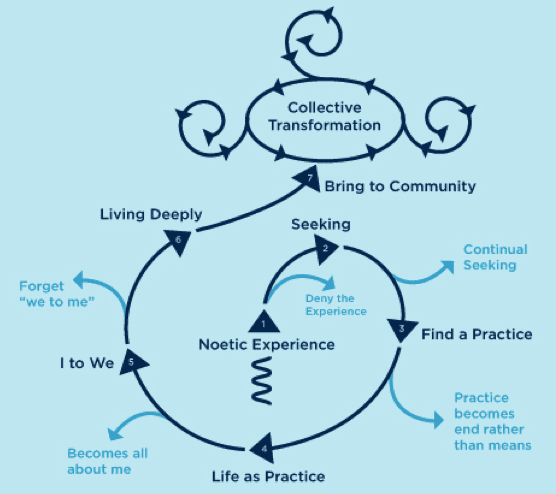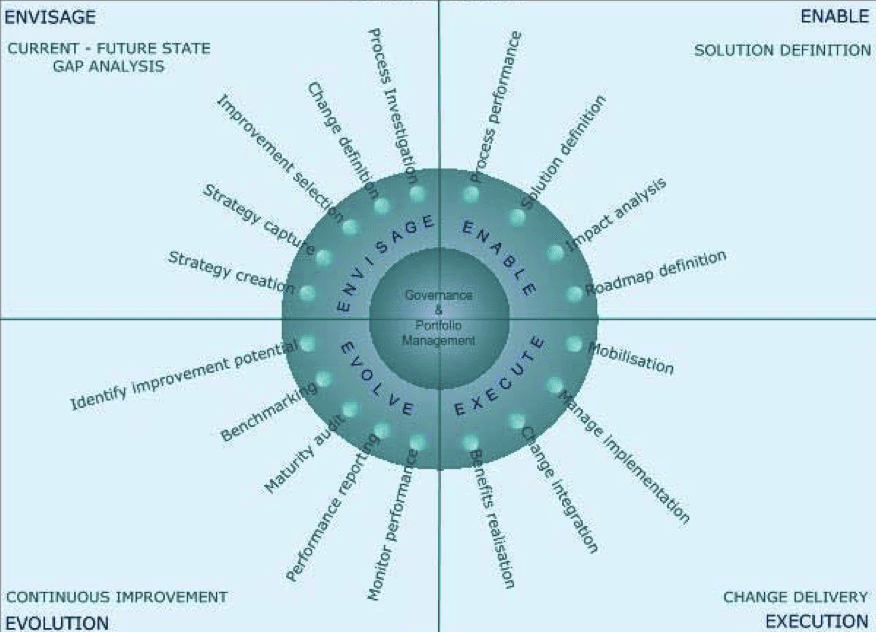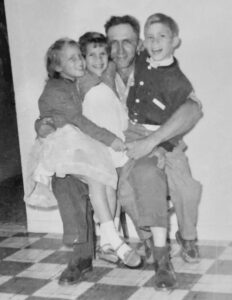I am always interested in how others view change, particularly other disciplines. But my research does not necessarily bring clarity. Take the two change models illustrated below as examples. In the first, produced by the Institute of Noetic Sciences, their research focuses on personal or consciousness transformation and maintains that “whether it happens to an alcoholic hitting bottom, a soldier on the battlefield, a mother who has lost a child, or a businessman seized by a moment of wonder in nature . . . a set of common factors [make up] the transformative process.”
Having experienced my own consciousness-raising transformations, I cannot disagree with the model. Step one begins with a ‘noetic’ experience. Okay, how many of you know what that is or even if you have had one? My trusty online dictionary states, “relating to mental activity or the intellect.” I’m thinking — no pun intended — noetic, in this context, refers to a trigger event, maybe an ‘aha’ moment that sets us to thinking differently than previously.

As the model shows, seeking a solution for our internal discomfort or conflict leads to the practice of new beliefs and behaviour patterns that eventually are internalized into daily life. During this time of practice to solidify the changes, new relationships are formed and the focus shifts from ‘me’ to my new community. Within this community is where our altruism and compassion take root and grow, leading us to balance ‘me with we’ in ways that serve the community and me. This service to both/and synergizes transformation such that individual changes combine into collective change, which triggers more individual change, and the cycle repeats.
A leading UK consulting firm, Glue Reply, focuses on optimizing IT/Business alignment (as illustrated below in their change model) using a four-step process for business or organizational transformation. The model begins by
1. envisioning a new future state,
2. defining ways and means of enabling this state,
3. executing the changes necessary to deliver on the vision and
4. continually evolving organizational efficiency and effectiveness over time.
Sound easy? Not really. Organizational change is an extremely complex science with not great success rates (20 to 25%). Although the language used to describe these four change steps might alter depending on the theoretical approach or consulting group, most in the business of IT/Business change would see them as standard practice.

What I am left wondering is — where in this business model is individual transformation planned for or allowed? And, would this omission be the reason 75-80% of IT/Business change initiatives either fail outright or never realize the return on investment originally promised?
Does it make sense to you that we need to consider the people requirements involved in any IT/Business change as much as we need to consider the systems, processes and procedures? In the end, it is people who will be required to learn and adopt these new changes.
The IT/Business model above conducts a Gap Analysis in its first stage of assessing the organization or system under study. Another gap in the change arena we need to analyze is the one between our understanding of individual and organizational transformational. If we do not fully engage an organization’s employees by creating a ‘noetic’ experience, how will we fully engage them in organizational transformation?




